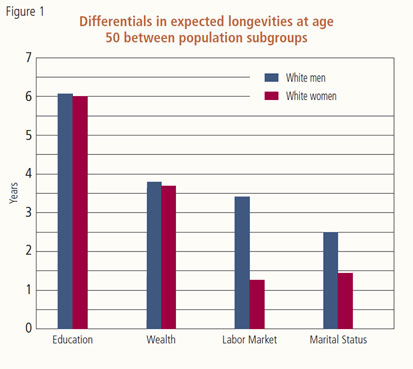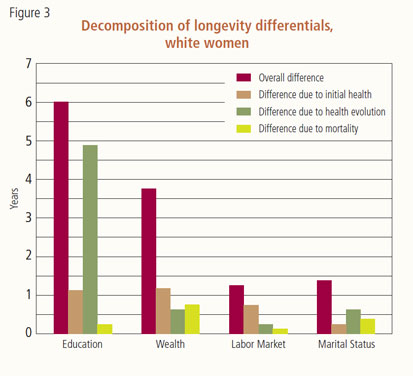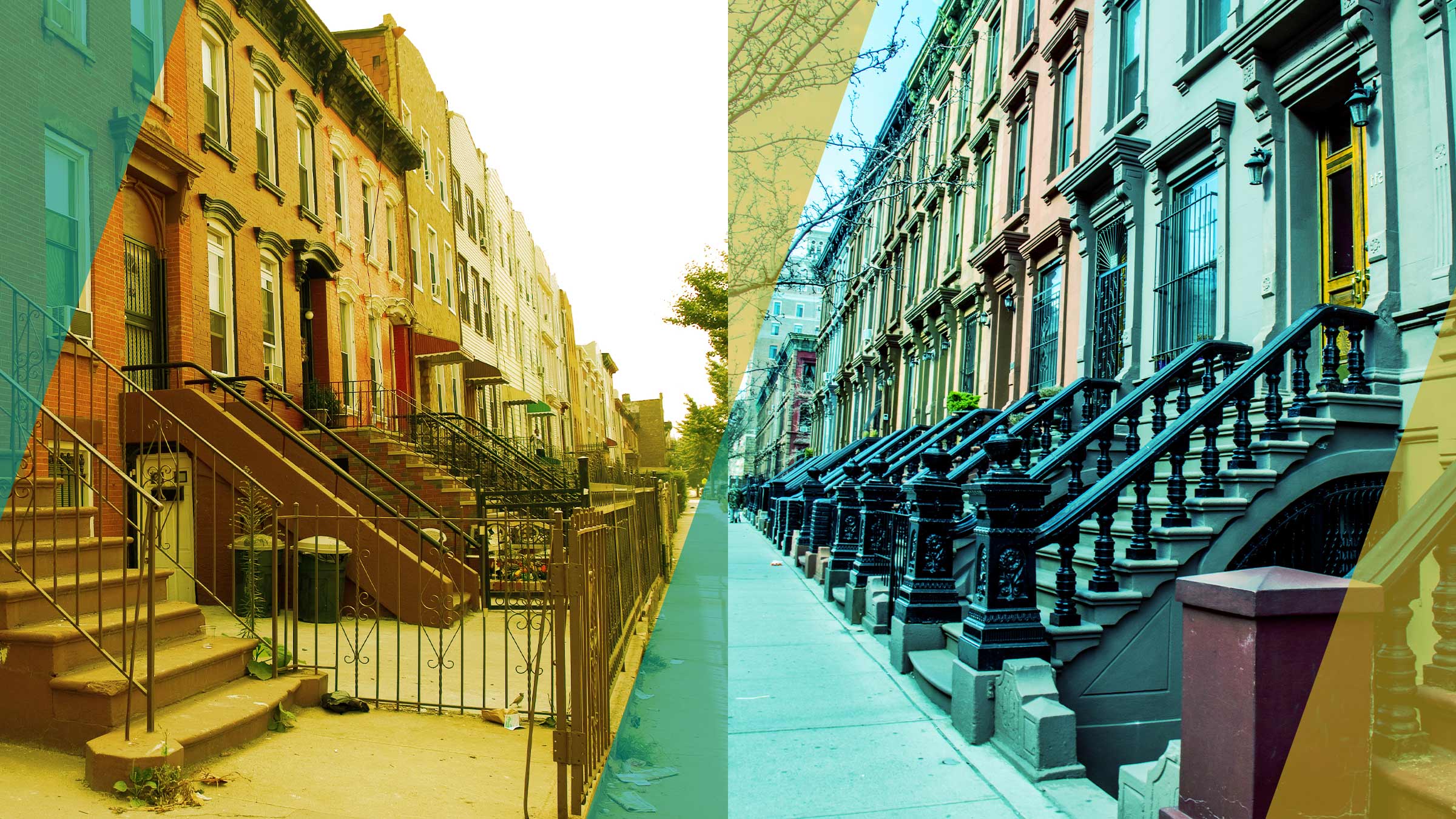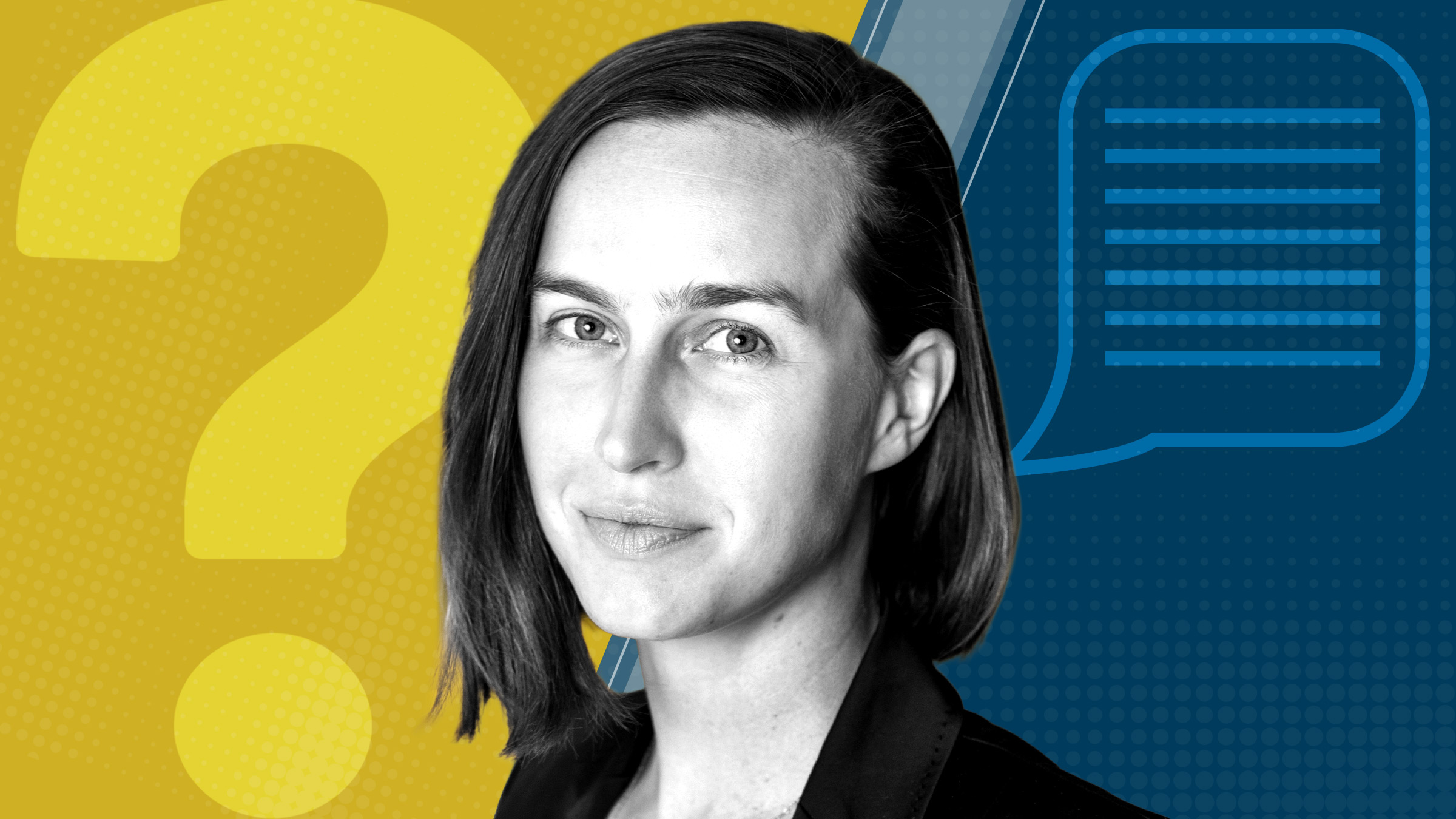
Reprinted with permission from voxeu.org
Economists have long been worried about income inequality and its effects on welfare. For instance, workers with a college degree earn on average much more than those who did not complete high school. This disparity translates into large differences in consumption levels and hence welfare (see, for instance, Heathcote, Storesletten and Violante 2010). We argue, however, that these welfare differences are dwarfed by the differences in longevity between individuals in different socioeconomic groups, and mainly by differences in longevity between individuals of different educational levels.
In recent research (Pijoan-Mas and Ríos-Rull 2012), we use the Health and Retirement Study (HRS) to document the expected longevities at age 50 of different population subgroups of white men and white women. In particular, we look at the different expected longevities by educational groups, wealth quintiles, labor market status and marital status.
Main results
Figure 1 shows that the most important differences are linked to education, which turns out to be much more important than wealth. At age 50, a college-educated white man can be expected to live 6.1 more years than a high school dropout; in contrast, a white man in the top quintile of the wealth distribution is expected to live 3.8 more years than a white man in the bottom quintile. Very similar differentials hold for women.
In addition, we find that a white man fully attached to the labor market (as a full-time worker or as an unemployed worker actively looking for a job) is expected to live 3.4 more years than an inactive individual; and a married white man can be expected to live 2.5 more years than an unmarried one. The differentials for women are substantially smaller, but still large.
To obtain these differentials, we did not compute life expectancies. Instead, we estimated a hazard model for survival, with the socioeconomic characteristic of interest and (self-assessed) health status as stochastic endogenous covariates. Then we used these estimates to compute expected life durations at age 50 for each group. Our methodology allows us to bypass the two problems associated with the use of life expectancy. The first problem is that people’s socioeconomic characteristics evolve over the life cycle (except for education) and hence so do the relevant mortality rates. For instance, one-third of white women who are married at age 50 become divorced or widowed before age 70. The second problem is that mortality rates tend to decline over time, and this may happen at different rates for people in different socioeconomic groups.
Decomposition
When we look at these longevity differences in more detail, we learn that they must be due to factors that evolve slowly with age. In particular, we use our estimates to decompose the differentials in expected longevity into three components:
- differences in health among socioeconomic types already present at age 50,
- different evolution of health conditional on socioeconomic status, and
- different mortality rates by individuals with identical health but different socioeconomic status.
Time trends
We obtained our results with the pooled HRS data, which range from 1992 to 2010. The large temporal span of the HRS can be used to obtain some information about how these differentials in expected longevity have evolved over time. Previous estimates document large increases in life expectancy differences between education groups (see, for instance, Preston and Elo 1995; Meara, Richards and Cutler 2008; and Olshansky et al. 2012). Consistently, we find that the differentials for education have increased, between 1992 and 2008, by 1.8 years for men and 1.7 years for women. In addition, we also document important increases for wealth (1.4 years for men, 0.7 years for women), for labor market attachment (0.7 years and 0.6 years) and for marital status (1.0 years and 1.5 years).
These large increases happened during a time period when there was a sizable increase in income and wealth inequality. Although we do not want to make any causal statement, it is hard to avoid thinking that the increase in income inequality lurks behind the increase in the socioeconomic gradient of longevity. If so, we should conclude that the upsurge of income inequality in recent decades has had welfare implications much stronger than previously thought. Our results also show, however, that education seems to matter more than wealth. Therefore, it might very well be that the increase in the socioeconomic gradient of longevity is also tightly related to selection: Over the years, the pool of less-educated or unmarried people has become worse off in terms of their ability to survive.
References
Heathcote, Jonathan, Kjetil Storesletten and Giovanni Violante. 2010. “The macroeconomic implications of rising wage inequality in the United States.” Journal of Political Economy 118 (4): 681-722.
Meara, Ellen R., Seth Richards and David M. Cutler. 2008. “The gap gets bigger: Changes in mortality and life expectancy, by education, 1981-2000.” Health Affairs 27 (2): 350-60.
Olshansky, S. Jay, Toni Antonucci, Lisa Berkman, Robert H. Binstock, Axel Boersch-Supan, John T. Cacioppo, Bruce A. Carnes, Laura L. Carstensen, Linda P. Fried, Dana P. Goldman, James Jackson, Martin Kohli, John Rother, Yuhui Zheng and John Rowe. 2012. “Differences in life expectancy due to race and educational differences are widening, and many may not catch up.” Health Affairs 31 (8): 1803-13.
Pijoan-Mas, Josep, and Victor Ríos-Rull . 2012. “Heterogeneity in expected longevities.” CEPR Discussion Paper 9123.
Preston, Samuel H., and Irma T. Elo. 1995. “Are educational differentials in adult mortality increasing in the United States?” Journal of Aging and Health 7 (4): 476-96.









